Durch das Anzeigen dieses Videos stimmen Sie zu, dass eine Verbindung zu YouTube hergestellt wird und personenbezogene Daten übermittelt werden können.
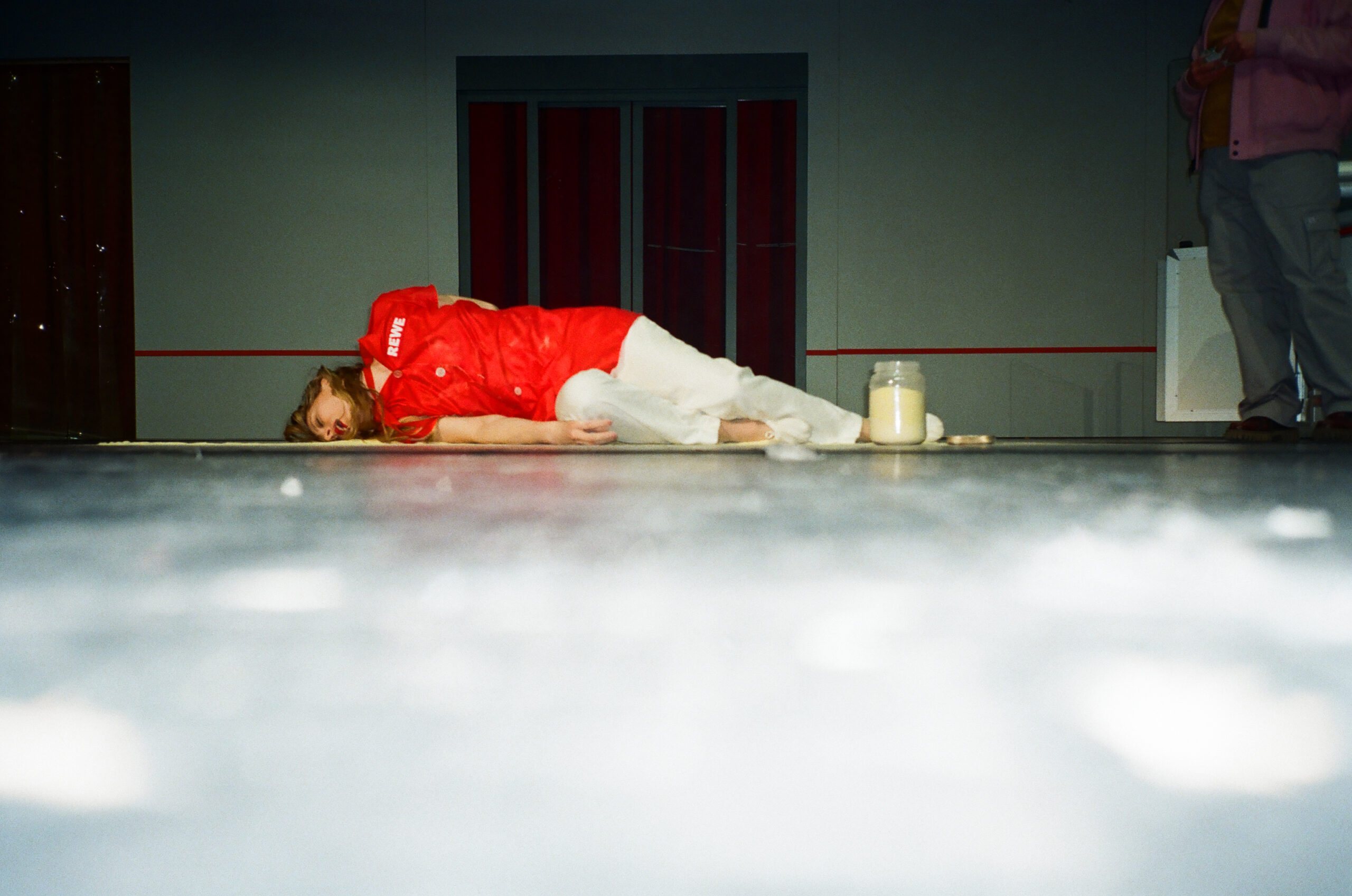

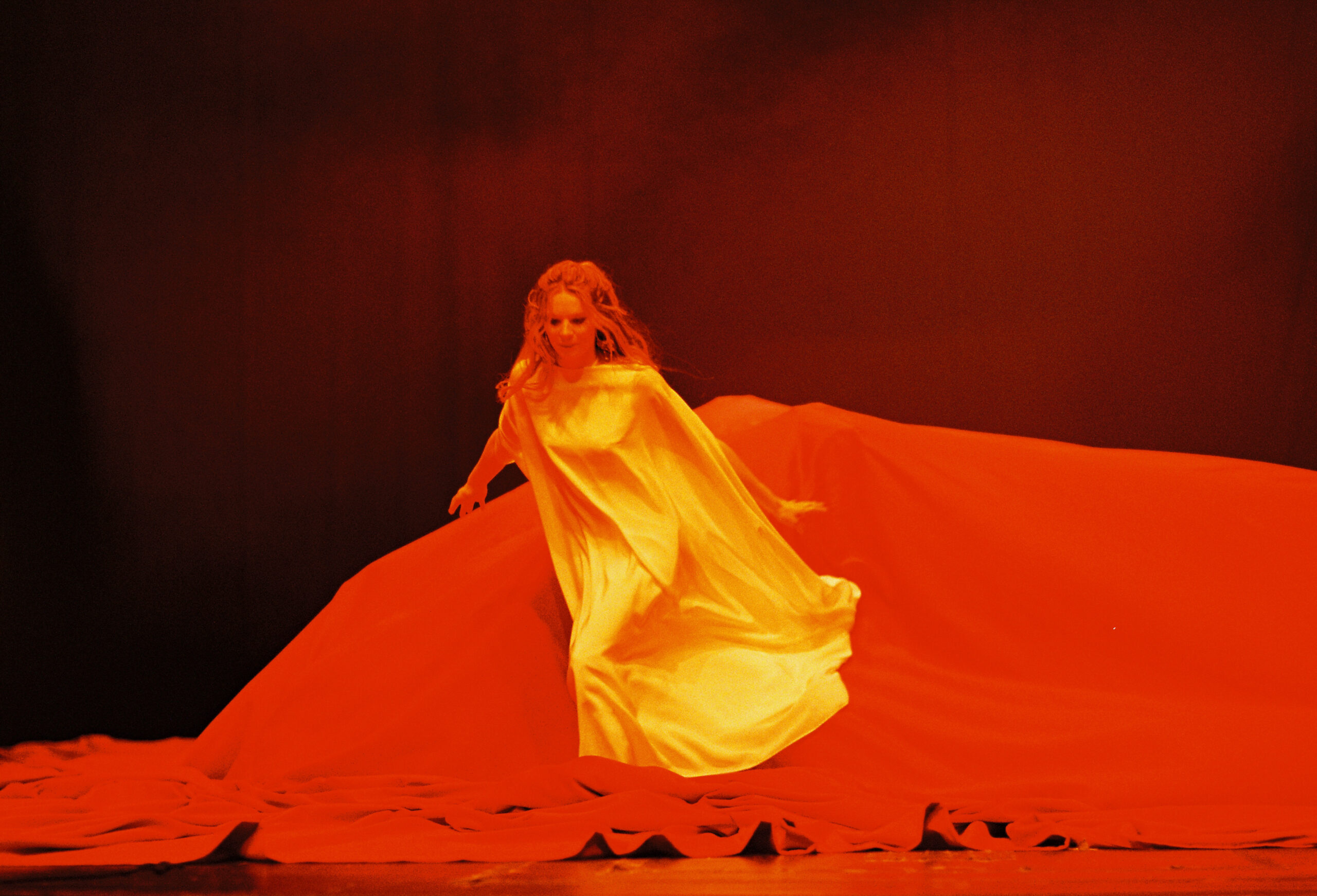

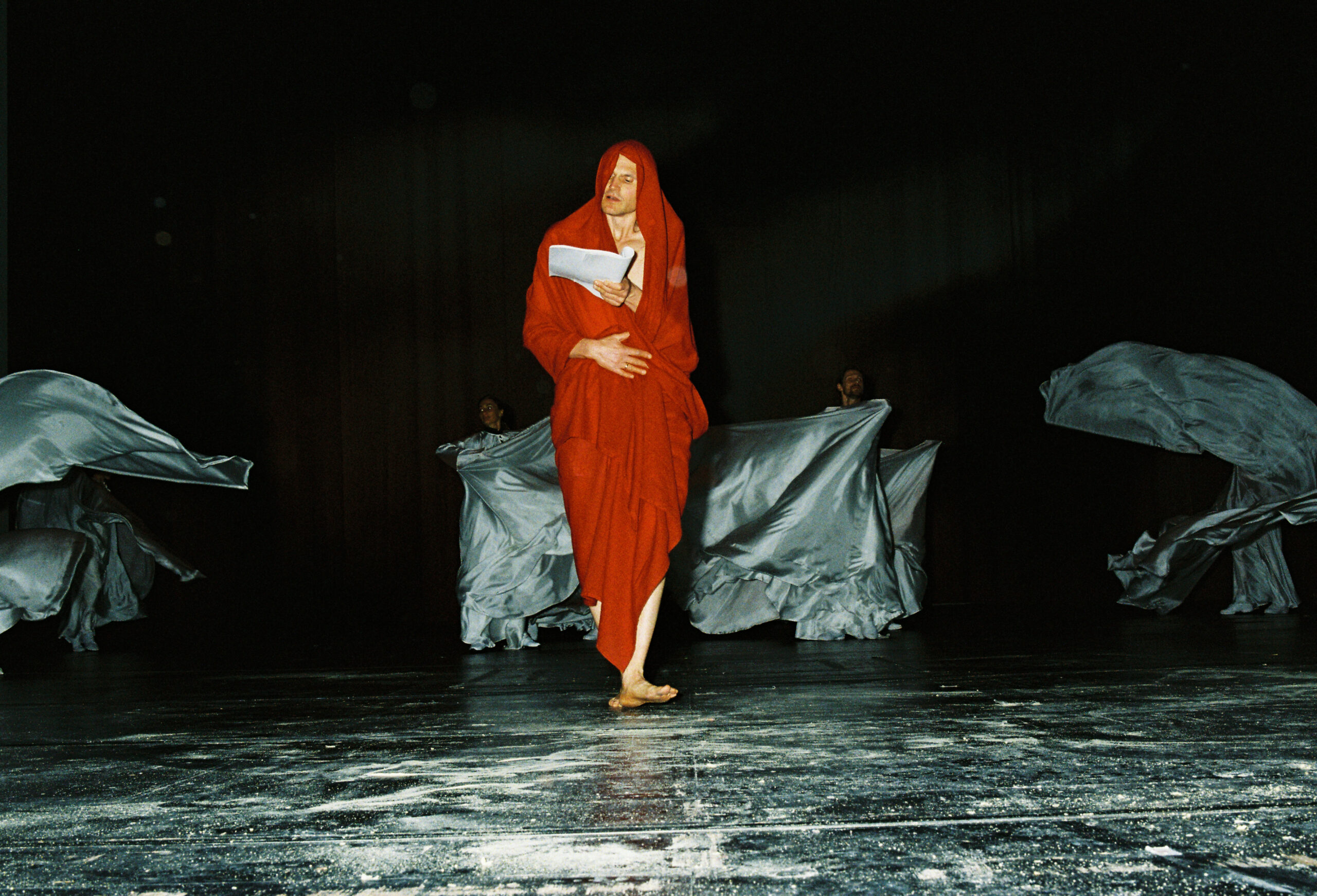
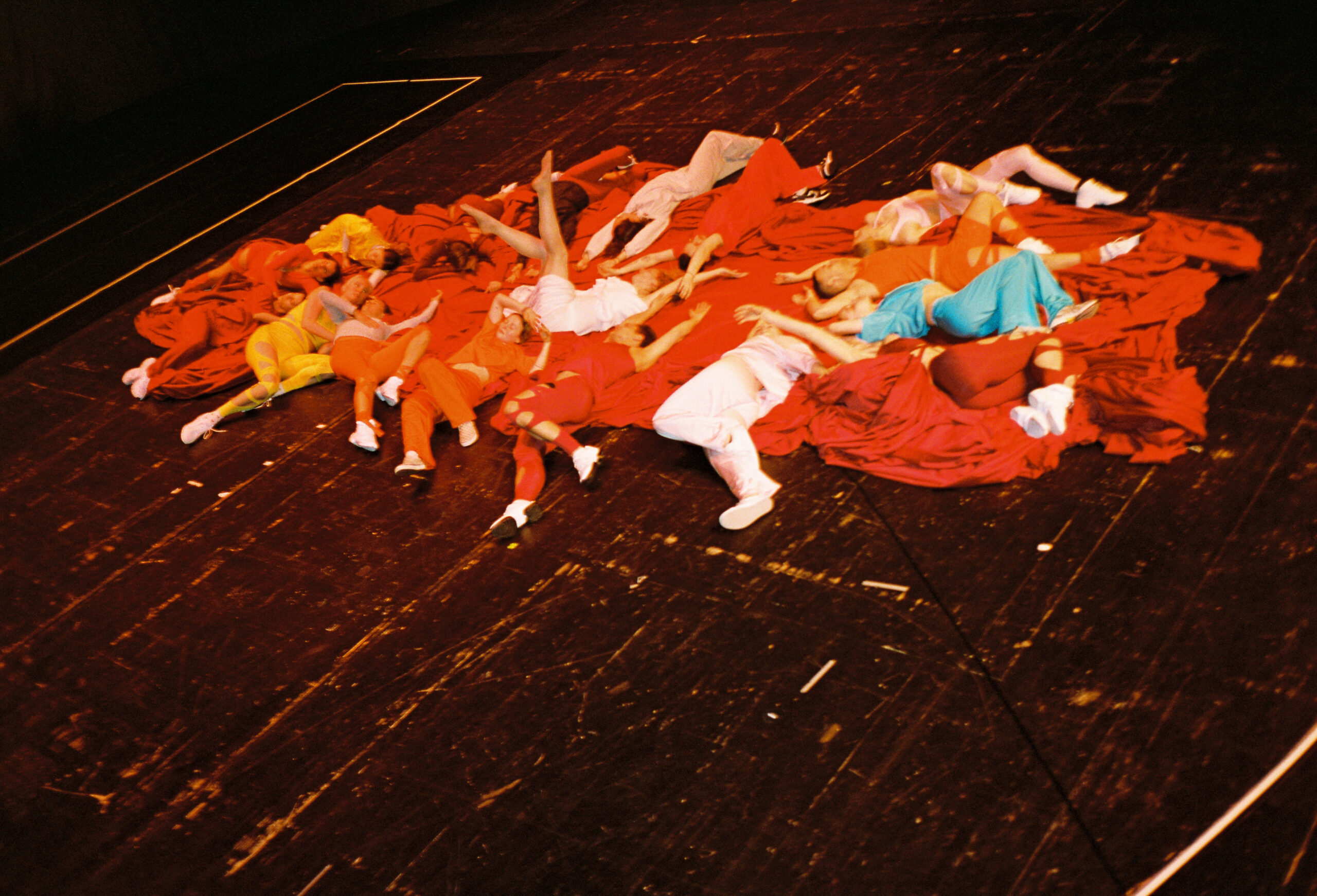

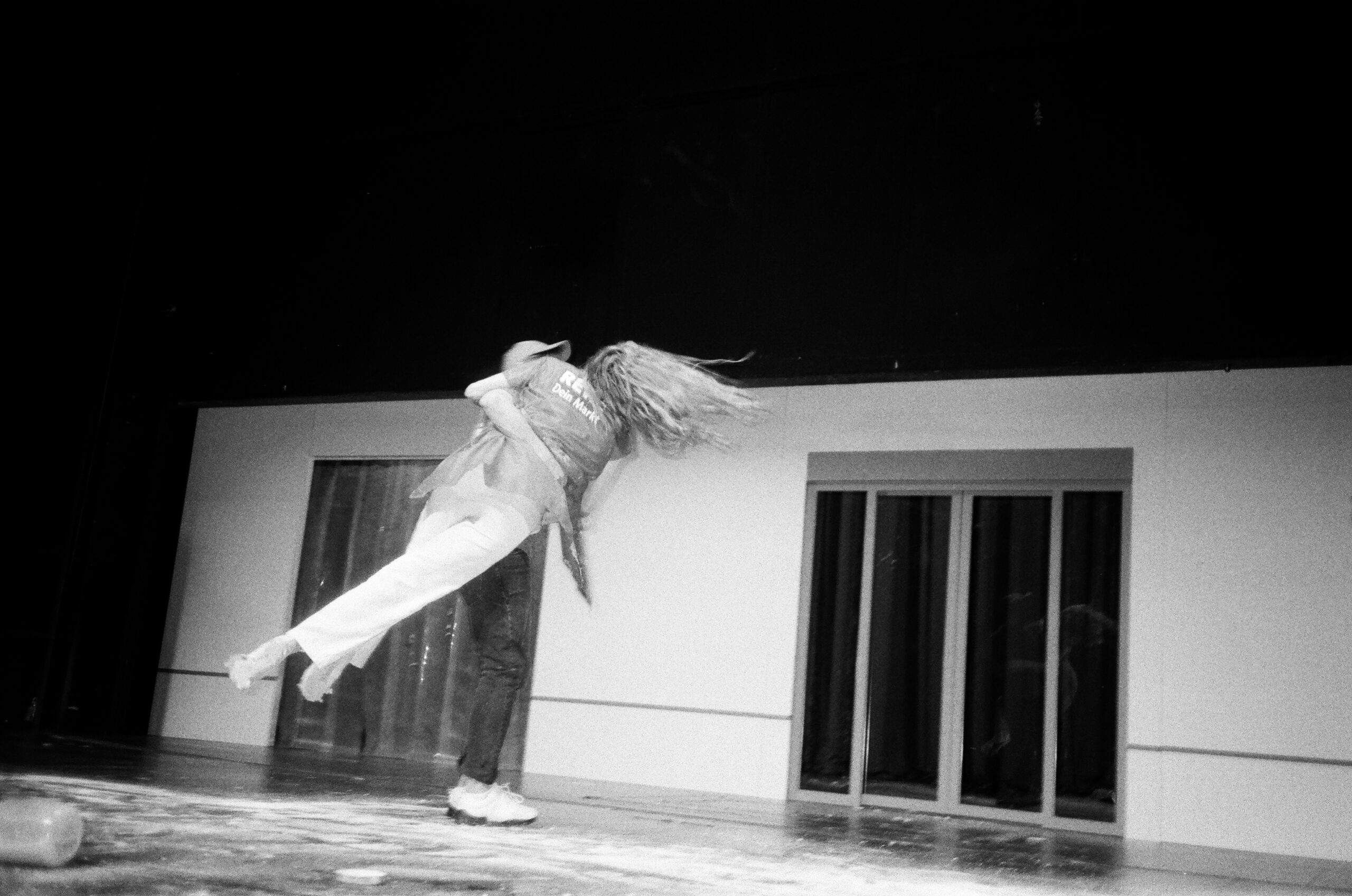


Sardanapal
Wenn ich nicht ich bin
People threw themselves off cliffs because of him, the epitome of Romanticism’s revolutionary artist. His play „Sardanapalus“ must see a comeback to our theatre stages. A passionate plea by Fabian Hinrichs.
150 million years ago in Europe, in a warm and humid climate, giant brontosaurs stripped cypress treetops bare. 15,000 years ago, an ice age set in covering the earth’s surface in metre-high glaciers with no life anywhere to be found. All this is common knowledge and it comes as no surprise. And that time will kill us, or that even Alexander the Great was reduced to dust stuffing a bunghole, has already been thought and written many a time. But a poet, who 200 years ago gave his name to the description of the mindset of a whole generation, whose death made women throw themselves off cliffs and men fall into despair – that this man and his work should be forgotten, is a remarkable, sobering and very sad fact.
The forgotten poet, politician, traveller, anorexic and freedom fighter who had a deformity at the Achilles tendons, was, of course, George Gordon Byron, also known as Lord Byron. The cultural movement that came to bear his name was called Byronism – or Byronmania – centring on weltschmerz, a terrible condition of which he himself suffered and of which he said it would end only if the world ended. The forgotten works of the British number one successful author in the first half of the 19th century are: „Manfred“, „Childe Harold“, “Cain“ and „Sardanapalus“. And while, for me, „Nathan the Wise“ and its author Lessing in general, could well be allowed to sit on the substitutes’ bench of the German national theatres team for the next few seasons, “Sardanapalus”, the effortlessly written and boldly titled ‘tragedy’, but much overlooked mixture of tragedy, burlesque and melodrama – dedicated to Goethe! – definitely deserves a splendid rebirth.
Since 1821, King Sardanapalus is not tired of asking: „Were I not me, here – who should I be? Where?“ He has a hunch what the answer might be. We can sense it too, for our own lives. The modern-day scepticism about being free from inner and outer constraints and norms – who could repress it? The intense longing for a life in another body, in another world, in another time – who wouldn’t know the feeling? Byron was familiar with the historical sources of the play at a very young age. Traditional knowledge had it that Sardanapalus was the last ruler of the ancient Assyrian empire, the downfall of which was brought about by the king who destroyed his treasures, the city of Nineveh and himself in the royal palace in 606 BC. Byron’s source was the ancient Greek historian Diodorus, although the events described have since been proved wrong. Byron picks up the story but makes substantial changes. The five-act drama is a masterpiece in Aristotelian terms, strictly sticking to the unity of action, the unity of place and the unity of time. This means, we only see the King in the palace hall as he drifts towards disaster during one short summer night.
The course of events in brief: King Sardanapalus defies the time-honoured and perennial rule of ruling by oppression, dissimulation, expansion, violence and lies. He is one to enjoy life, contemplate, sing, kiss and dream. Instead of killing others, he prefers to live life to the full. He does not want to take liberties that are denied to his people, favouring „tearless triumphs“ and a „life without lies“ instead. He is married to Queen Zarina, yet in love with the slave Myrrha. He is despised for being different by large parts of the power establishment and his own people, and soon a coup is prepared. The courtiers, who love to harass the king, finally demand he lead with a firm hand. Sardanapalus refuses, wavers, then decides to confront the traitors with determination and force. Alas, it’s too late. His army is already defeated, the city surrounded, hard facts have been created. He has his wife Zarina escape with their sons, then distributes his possessions among the few remaining faithful. He has a huge funeral pyre erected for himself, with his throne sitting at the centre. In the company of Myrrha, who refuses to flee, he drinks a last cup of wine dedicating the last sip to one of the traitors, Beleses. Sardanapalus mounts the woodpile, Myrrha sets it on fire and springs into the flames to be united with her lover. Curtain. Applause.
The key question Byron sets out to explore in effortlessly crafted five-bar verses, is the persisting philosophical problem unresolved even two hundred years after Kant: “What is Enlightenment?” followed by “What is reason?” – and: What is reasonable? Who decides this from which vantage point? The ingenious Henrik Ibsen had a point in saying: Every thought, when thought to the end, ends up as its opposite. Same with King Sardanapalus, whose actions and thoughts are deemed to be all sort of things but reasonable. Sardanapalus loves a drink and banquets, he refuses to rule by decree, he’s fond of putting on women’s clothes, more a drag queen than a prince, and he generally seems to have a lot of a lot – a lot of time, a lot of fun, a lot of sex from dawn till dusk. He lets the rebels and traitors have their way, as if devoted to fate. By refusing to conform to preconceived ideas of what a king should be like, by rejecting ideas thrown at him from “outside”, he’s stirring up hatred among his courtiers, his army and his people. And yet, even poor popularity ratings and the keenest of political advisers are unable to exert influence on this “She-King“ (Byron) Sardanapalus, who neither seeks territorial growth nor clings to the territorial status quo. Committing what Machiavelli once called a ruler’s greatest mistake, he refuses to be feared and rather wants to be loved. The foulest word, to his mind, is „virtue.“ He discards Myrrha’s pleas to ask the gods for advice: „They cannot answer.“ There is no such thing as divine reason any longer. Most of what this King does, seems highly unreasonable. Yet it is not. Not at all.
For what Sardanapalus’s advisers, friends and the people of his kingdom want from him is not exactly reasonable things. Rather, it is the reverse side of reason, an unreasonable, inhuman kind of reason, in the name of which „oceans of blood are being shed“ and „people are driven away“. Behind these seemingly rational ideas lies the unbridled, all-dominant morality of the ‘universal human being’ making sure that „pyramids, Babylonian bulwarks are built through the sweat of their brow“ by real living human beings. There’s only one person who has no intention of building a wall, not even a nice one – it’s King Sardanapalus.
Offering an alluring programme of practical reason one cannot praise enough, and in bold letters, reading: EAT, DRINK, AND LOVE; THE REST IS NOT WORTH A FILLIP”, Sardanapalus refuses, in unprecedented ways, to perpetuate that which has always been the case, and to repeat the same old patterns of material growth and conquest. Instead, he sets out to replace them with a new paradigm of love, tolerance, pleasure in the here and now, plus more closeness to nature, naturally. In so doing, he points, in lucid and fully rational ways, to the inhuman, empty centre of a tyrannical will to undertake endeavours, in which human beings are being used as material to create something for the history books. Works with “tears attached to them” that will be “reduced to ashes” in the end. Just like Byron himself. But why rule a realm, if you cannot enjoy gliding down the river Euphrates in a gondola, in the embrace of your loved one, with the starry sky above you while savouring a good glass of wine? Speaking of wine – where is Bacchus (AKA Dionysus) in all this? What is his claim to eternity? Surely not “the landmarks of the seas of gore he shed /The realms he wasted, and the hearts he broke”. His title to immortality is “here in this goblet—the immortal grape/ From which he first expressed the soul, and gave / To gladden that of man …/ Let it now humanise thee!”
How many people could have a good life under a king schooled in the art of living, a king who wouldn’t need a trophy to make his mark in the history books and make sense out of meaninglessness, rather than die on the battleground? “Glory! what’s that?”, he asks his beloved Myrrha. What is glory, indeed? The lines that follow: „And wear no crowns but those of flowers“ could have been written by Walt Whitman. Or by Joni Mitchell. One could be tempted to see in Sardanapalus a peace-loving-if-it-serves-him, hedonistic, and thus profoundly unpolitical ancestor of the hippie generation. But this thought, thought to its end, also ends up somewhere else entirely. While the hippies, or neo-hippies, are busy turning even the most boring stuff into an event, collecting moments rather than money, convinced to have found the avenue to happiness for themselves and their community, Sardanapalus sees that there is no such avenue. There is no beach under the cobble stones, only the vile circumstances; and the road won’t lead to freedom and happiness, but straight into the bottomless pit of self-control and surveillance. Sardanapalus understands that happiness involves being able to live “how I please” and letting others live how they please. However, the practical world, the one we must live in, into which we are born, does not permit to live a life of continuity, at one with our selves. “I am the very slave of Circumstance / And Impulse—borne away with every breath!/ Misplaced upon the throne—misplaced in life/ I know not what I could have been, but feel /I am not what I should be”.
What he is and how he is supposed to think and act was, so much he knows, placed upon him, upon the human being Sardanapalus. But placed upon him by whom? Sardanapalus never speaks of – or to – the human being as such; for him, human beings only exist in the plural. In this world in which we have to live, the painful and too often deadly distance between us can only be overcome by compassion. King Sardanapalus shows this all-encompassing compassion for his fellow humans across all national, sexual, gender and rank differences. “I hate all pain / Given or received; we have enough within us / The meanest vassal as the loftiest monarch/ Not to add to each other’s natural burthen/
Of mortal misery, but rather lessen / By mild reciprocal alleviation / The fatal penalties imposed on life.”
Yet Ibsen, the genius, was right: Sardanapalus proves to be a rational human being precisely by permanently challenging his own identity. As if he kept a book of Brechtian aphorisms on his bedside table sitting beside the rose water and the small bowl with carnation leaves, he seems to quote Brecht’s dictum that “Situations are the mothers of people”, takes to his sword and plunges into the battle. Turning from liberal laissez-faire monarch to fighter, he’s now determined to assume responsibility for his people and exercise authoritarian rule. He is even prepared to take care of his family, never mind the fact that he had previously treated biological relationships as irrelevancy. This is by no means a symptom of some personality disorder in the clinical sense. On the contrary, it only proves that he is “a Mentsh”, as they are called in Yiddish. In the end, the things and circumstances that have forced him to become what he is, are up in flames – the throne, the crown, his own self. „It’s better to burn out than to fade away – My My, Hey Hey“, Neil Young sang in 1977. In 1821, Byron wrote (in the play): „So let me fall like the plucked rose!—far better/ Thus than be withered.“ That’s what I call looking into the abyss.
This sounds little short of dramatic. And indeed, it is. And yet it is not a tragedy. “Sardanapalus” is a burlesque, or a burlesque tragedy, even a tragic burlesque, if you like. Seeing his role and life as a king as a case of circumstances imposed on him by external forces, fallen to him without any previous casting, he seems to fully accept the shifting job profile of being a king arising with a succession of multiple situations of crisis. And he does it in a manner rather endemic to German theatre stages – with a sense of humour and wit. How I laughed! His entrance is a hilarious scene: the head of government as drag queen, and a most natural one at that – written and performed in the 19th century, when queer theory was less than a tear in the ocean.
When Sardanapalus will finally seize his sword to defend himself in greatest trouble, he is quick to pass it on to the next person, after lifting it up once without dealing a blow. He finds it too heavy to promise any fun in the fight. In the third act, with the rebels storming the palace, he, in haste, has to don his armour, yet asks his servant to bring him a mirror, and, looking at his own reflection, is pleased to note: “This cuirass fits me well.” But he distastes the helm, it is too heavy, too much metal. He insists to wear a lighter one, the one which bears a diadem around it. In terms of protection, it is merely accessory, but he doesn’t mind: function follows form, and form follows the sublime.
Byron himself once had exclaimed at the sight of his own bust completed by Bertel Thorvaldsen in Rome: „No, this looks nothing like me, not at all! I look much unhappier!“ And while building „the most royal of funeral pyres“, Sardanapalus adds stage directions on how and where to pile up the wood to create the most amazing cloud and flame effects to be raved about centuries later. The lovers Sardanapalus and Myrrha in front of the fire: “And now, farewell; one last embrace…true, the commingling fire will mix our ashes.” Death is a vital error, too good (too beautiful) to be true.
Amid all the burlesque activities resembling a play within a play, the Aristotelian rules for dramatic tragedies, the three unities, remain strictly unchallenged. How square and austere most Greek tragedies seem in comparison, how lifeless, how static and untrue! Because truth doesn’t merely ‘exist’ out there, truth must be built up, much like the subject, or the roles we play in the houses we inhabit and on stage. It’s like the words we learn to speak only after having been taught them. Any attempt to fix the whole will be doomed from the start.
This is why theatre shows that won’t make you laugh at least a couple times, must be called failures in their delusional attempt to craft aesthetic experiences following concepts and abstract ideas. What “Sardanapalus” delivers apart from its intellectual message is that which makes it into a work of art: a bold and sensual experience used in the service of undoing our rigid ways of thinking and reasoning. Sardanapalus in his queer manifestation with a huge entourage in tow, all clad in the most amazing costumes, transforms the stage into one billowing, flowing, celebrating fest. I can picture endless banquet scenes, filled with banter and laughter, but also silent moments of reflectiveness, sleeping phases, contemplations of the nocturnal skies, fencing and battle scenes transforming into song and dance parts. And even the end is an unending slipping in and out of tragedy and melodrama in the face of a huge pyre, actually set on fire on the stage. Then the curtain falls and the last we hear is the crackling woodpile.
The end.
Byron’s reference to Bacchus (Dionysus) is, of course, a welcome (and urgent) call to go for sensuousness when- and wherever you can get hold of it. Without the theatrics of digital modernity, of manuscripts, second or split screens, or (easy) binary truths – because they’re not worth a penny. Eat, drink, love, muse, dance, sway, sing or hold your peace, hum, take a bath, say sweet little lies, do a bit of fencing or gondola riding, hesitate – but always master your lines! There is a striking offshoot of Byron’s drama which, unlike the womb from which the original once sprang, is not forgotten. It’s the painting „The Death of Sardanapalus“ by Eugène Delacroix, in the Louvre. It was painted after Delacroix had read Byron’s burlesque tragedy, and it dates from a time when visual arts were still able to offer substantial clues to the theatre arts, rather than merely providing a glance into the depths of emptiness. The painting is often described as an „orgy of colour and movement“. Now, wouldn’t it be marvellous to be able to experience such an orgy in the theatre as well? So long as this celebration is not the outcome of some hard thinking about basic realisation options by some director sitting at his or her desk at home or in row three in the auditorium during rehearsals, given this precondition, the theory and discourse driven, trite theatre could finally win back a ‘tendency towards infinitude’ (Nietzsche), without which the theatre is only a moral institution of the most primitive spiritual, intellectual and aesthetic design, and a far cry from reality and its mysteries in its wild goose chase after current hot topics. As the happy, sad, at one with himself human being Sardanapalus notes: “There is always something mingling with what we consider our happiness.” The theatre is, of course, the natural home of this insatiable desire and infinite yearning.
This article was first published in the Frankfurter Allgemeine Zeitung in November 2019.
The stage design uses a motif by the artist Pola Sieverding from the installation Contact Zone (2023) for the circular horizon. It also quotes the cover of the album Vulkano Romano by the musician Romano.
A collaboration with Flying Steps Diploma – the dance education programme of the Flying Steps.
